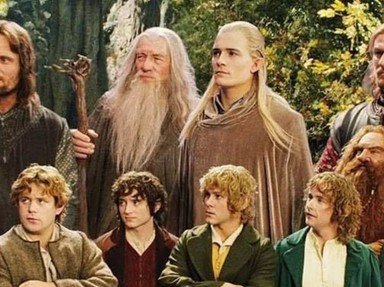Quiz Answer Key and Fun Facts
1. Fingon the Valiant was the fourth High King of the Noldor in exile, after his father Fingolfin perished in single combat against Morgoth. Who was his spouse?
2. Elu Thingol was King of the Sindar, the Grey-elves of Beleriand. He lived in Doriath. Who was his Queen?
3. Húrin Thalion, the Steadfast, was said to be one of the mightiest warriors of Men. He was the last Lord of Dor-lómin and vassal of Fingon, High King of the Noldor in Beleriand. Who was his wife?
4. Túrin Turambar was one of the greatest heroes of Middle-earth and also the most tragic one. He would wed Níniel in Brethil. Who was she?
5. Huor's son Tuor became the messenger of Ulmo and travelled to Gondolin. There he would marry Idril Celebrindal. She was the daughter of whom?
6. Finwë was the first High King of the Noldor. He awoke at Cuiviénen and led the Noldor to Aman. Was he married twice?
7. Beren, a Man from the House of Bëor, was the first of Men to marry one of the Eldar, the Elves. In order to marry his beloved he had to fulfill a quest given by her father. What quest did Beren have to fulfill to finally marry the love of his life?
8. Finrod Felagund was the son of Finarfin. His beloved was Amarië. Did she go to Middle-earth with him?
9. Eöl, the Dark Elf, was a remote kinsman of Thingol of Doriath. He married one of the Noldor, though not entirely to her will it seemed. Who was she?
10. Dior was Thingol's heir in Doriath. Who was his spouse?
Source: Author
fogeltje
This quiz was reviewed by FunTrivia editor
agony before going online.
Any errors found in FunTrivia content are routinely corrected through our feedback system.
